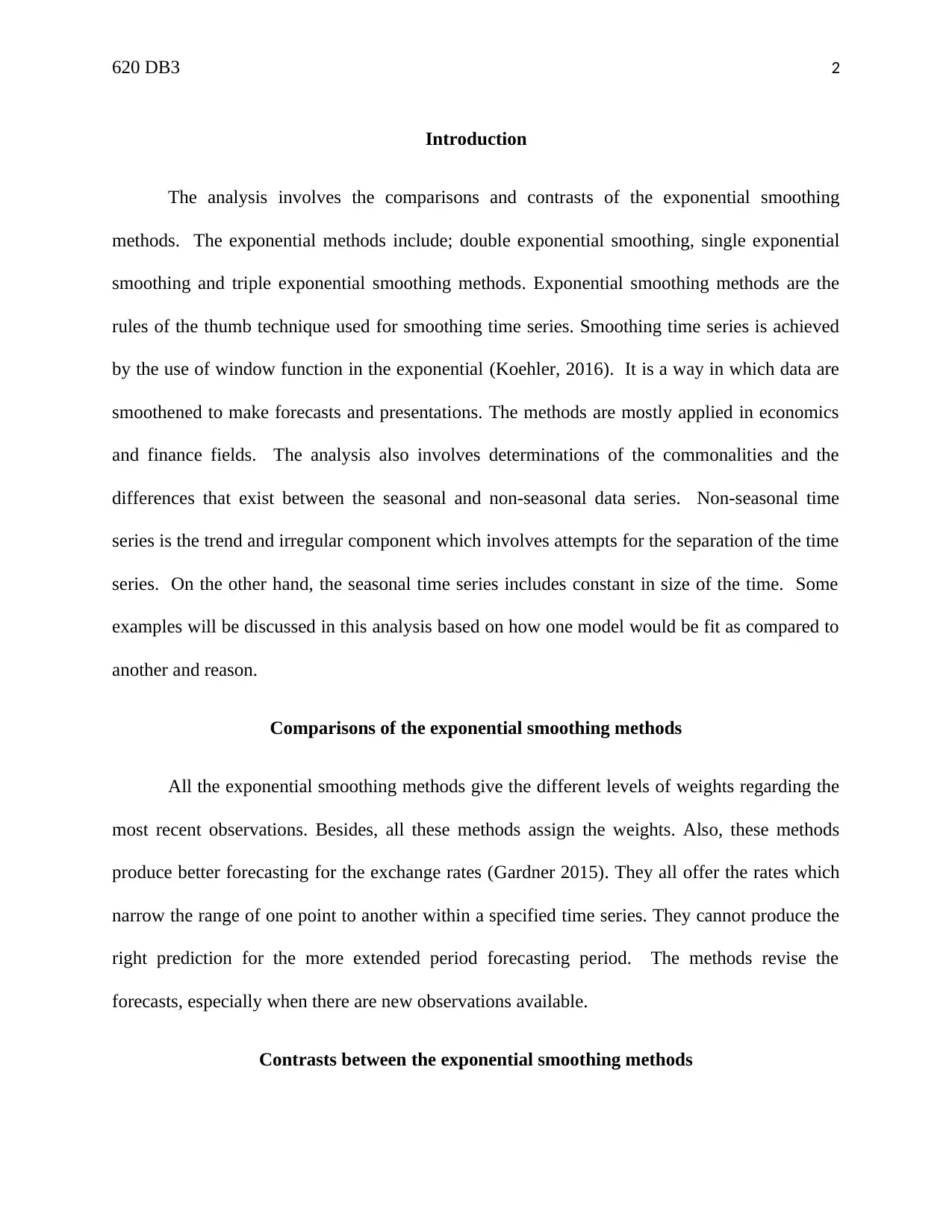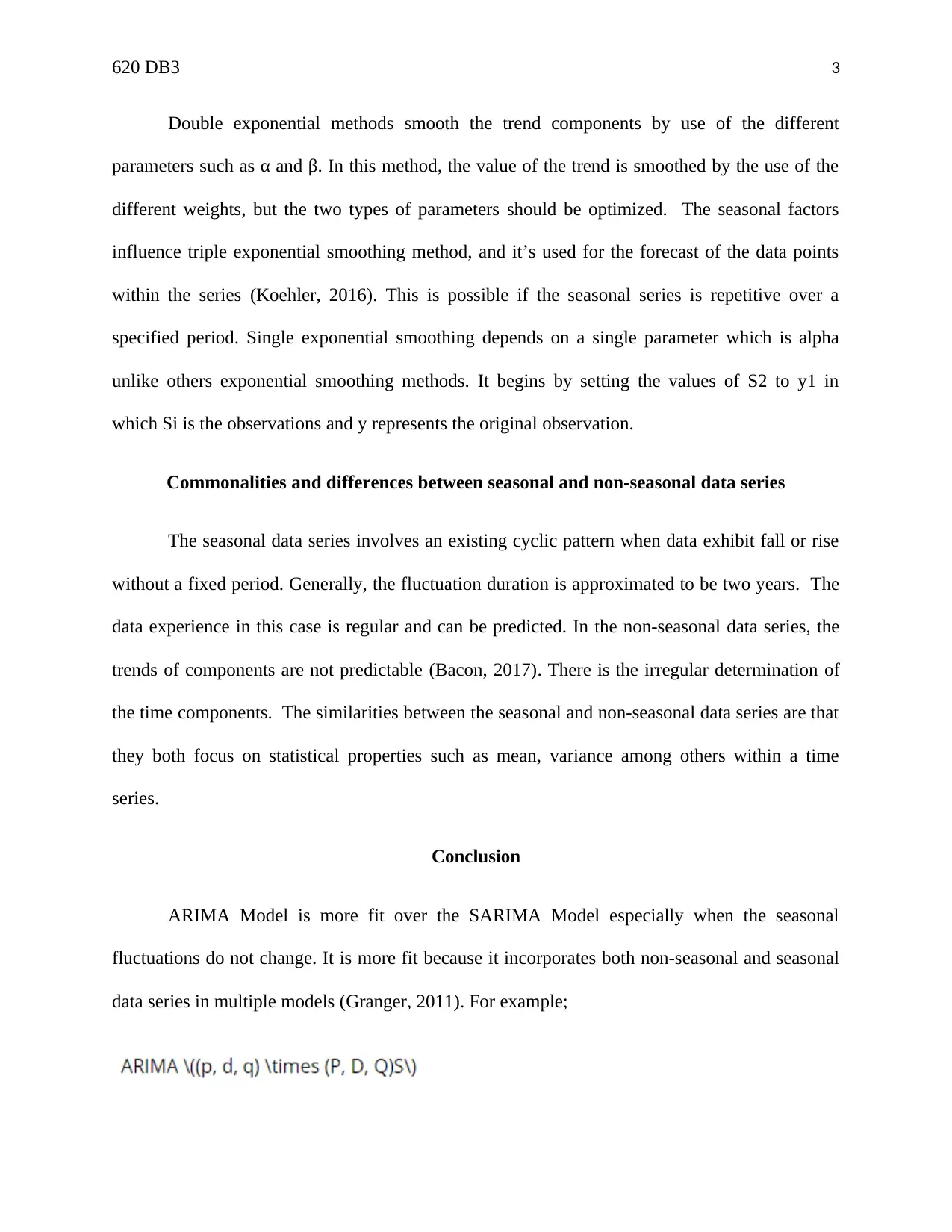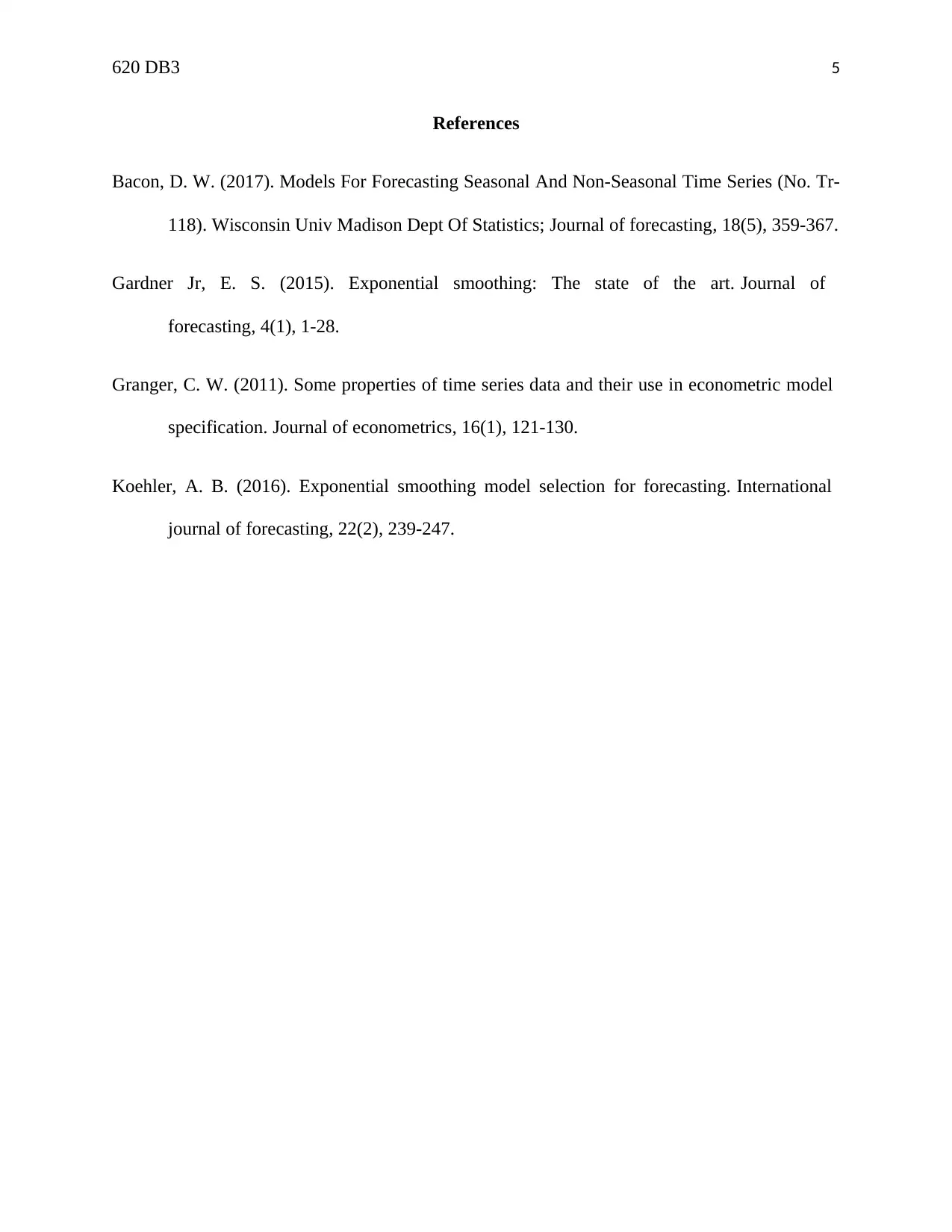620 DB3: Comparative Analysis of Exponential Smoothing and Data Series
VerifiedAdded on 2023/03/31
|5
|630
|153
Essay
AI Summary
This essay provides a comparative analysis of exponential smoothing methods, including single, double, and triple exponential smoothing, highlighting their commonalities and contrasts. It discusses the application of these methods in smoothing time series data for forecasting, particularly in economics and finance. The analysis also differentiates between seasonal and non-seasonal data series, focusing on their predictability and statistical properties. The essay concludes that the ARIMA model is more suitable than the SARIMA model when seasonal fluctuations remain constant, emphasizing its ability to incorporate both non-seasonal and seasonal data effectively. Desklib offers a wealth of similar documents and solved assignments for students seeking further assistance.
1 out of 5











![[object Object]](/_next/static/media/star-bottom.7253800d.svg)